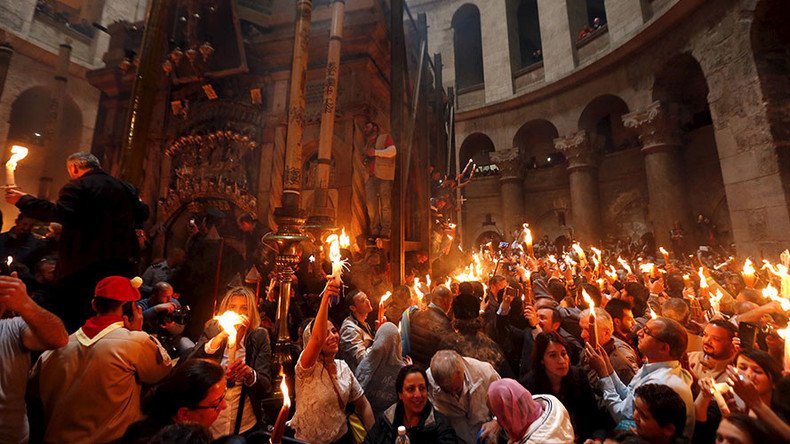‘My knees are shaking’: Jesus Christ’s 'tomb' seen for first time (VIDEO)

Further details of the supposed burial tomb of Jesus Christ have been revealed by researchers in Jerusalem. The limestone slab where Christ is said to have been placed has been exposed along with part of the original wall.
The research team working at the Church of the Holy Sepulchre detected the original limestone shelf, known as a “burial bed”, last week but have now been able to reveal the fully intact “Holy Rock” in full, according to National Geographic.
Take a look at what researchers found while examining the holiest site in Christianity https://t.co/AyDmxAHx9t
— National Geographic (@NatGeo) October 31, 2016
"I'm absolutely amazed. My knees are shaking a little bit because I wasn't expecting this," Fredrik Hiebert, one of the archaeologists involved in the project said.
“We can't say 100 percent, but it appears to be visible proof that the location of the tomb has not shifted through time, something that scientists and historians have wondered for decades.”
READ MORE: Jesus Christ’s ‘burial slab’ uncovered during restoration
Part of the original cave wall has also been revealed with the team cutting a window into the side of the tomb to view it. "This is the Holy Rock that has been revered for centuries, but only now can actually be seen," said professor Antonia Moropoulou, who is directing the project.
When marble cladding was first removed from the tomb it revealed a layer of fill material. After hours of removing this, another marble slab with a cross etched into it was uncovered. This slab was taken away for a short time by the team, exposing the original burial slab where Jesus is believed to have lain before his resurrection.
The church was first believed to be the location of Jesus’s burial in 325 A.D. when representatives of the Roman emperor Constantine arrived in Jerusalem.
"We may not be absolutely certain that the site of the Holy Sepulchre Church is the site of Jesus' burial, but we certainly have no other site that can lay a claim nearly as weighty, and we really have no reason to reject the authenticity of the site.” archaeologist Dan Bahat told National Geographic.
A team from the National Technical University of Athens (NTU) had 60 hours to study the tomb before it was resealed. The project is part of a restoration effort to repair water damage underneath the tomb.
This is the first time that anyone alive today has been able to view the tomb, which has never been photographed or drawn. Located inside a small structure within the church known as an Edicule (‘little house’), the tomb has been covered in marble since at least 1555 A.D. to prevent pilgrims from removing rock from the original bed.
Church of the Holy Sepulchre, Jerusalem about 1892 (update) https://t.co/B7cw8Czt1lpic.twitter.com/lqDbRTIwLp
— peopleplacesfacts (@pastpictures_) October 27, 2016
According to scripture, Christ was laid on the shelf in the tomb after dying at the crucifixion around 33 A.D. After three days his remains were discovered to be missing and Jesus was said to have appeared over a period of 40 days before ascending into heaven.












